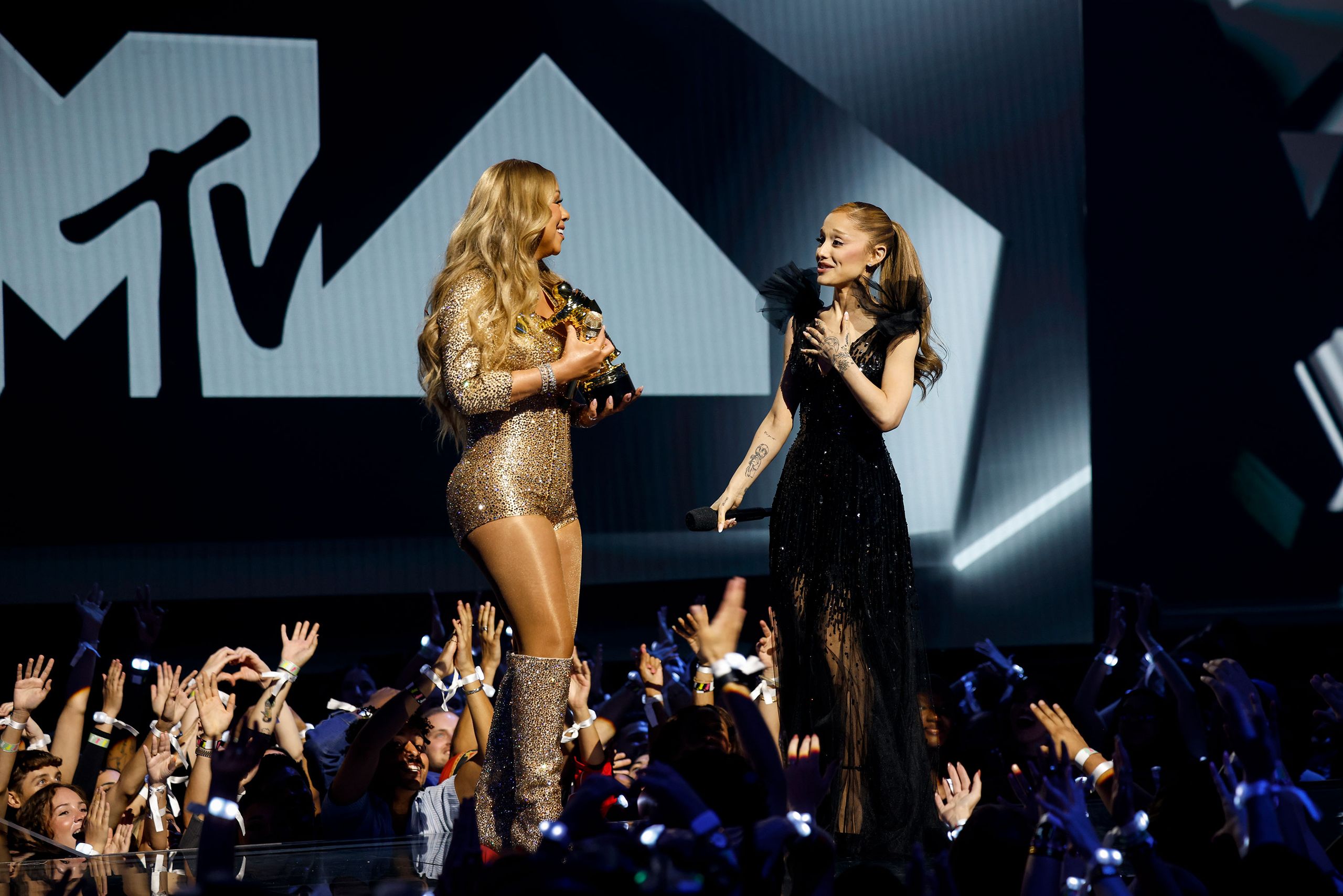"Gen X Takes Center Stage: From MTV Dreams to the VMAs | Vanity Fair"

An unsuspecting CBS viewer tuning in at about 8:30 on Sunday night might have been in for a shock. For the first time ever, the network was airing MTV’s annual Video Music Awards—and showing a performance that might have seemed cutting edge in 1999. The show devoted about six minutes to a celebration of Ricky Martin, who sang a rousing medley of his hits and accepted the first ever latin-icon award.
It was the first in a series of retrospective moments throughout the three-hour show, which was hosted by early ’90s MTV standby (and five-time Grammys host on CBS) LL Cool J and featured performances from Mariah Carey and Busta Rhymes, along with a cameo from members of Aerosmith in a Yungblud-fronted tribute to Ozzy Osbourne. After decades of cultural pandering to baby boomers—a generation that includes even the celebrities we tend to associate with MTV’s initial peak, from Madonna to Michael Jackson—last night’s VMAs implied that the center of gravity for American nostalgia has finally shifted to Generation X. (Carey was born in 1969; Rhymes in 1972; Martin in 1971.) If the 1990s are trendy again, it’s partially because the Gen X’ers in our midst have become our culture’s elder statesmen.
As the night went on—and older CBS viewers perhaps began to tune out—the performers’ average age started to drop. Near the end of the night, 20-year-old viral success Sombr performed. But even the millennials and Gen Z’ers in the crowd seemed eager to pay respects to their forebears. Colombian reggaeton star J Balvin introduced Martin—and the excitement on the younger musician’s face was palpable, a reminder that Martin helped usher Spanish-language music into the mainstream, which inexorably led to the reign of Bad Bunny. From Latin pop ascendance to queer acceptance, we’re living in a world that Martin helped to create.
The traditional logic of music awards shows demands that producers save the most important moments for the end of the night, all the better to maximize ratings. But the VMAs this year rejected that logic entirely, front-loading bigger (and older) names while leaving newer performers like Sombr, Megan Moroney, and Alex Warren for the night owls. Perhaps by design, nostalgia formed the show’s backbone, so there wasn’t much room to explain why these new stars are worth paying attention to.
It’s long past a cliché now to say that MTV doesn’t play music videos anymore; these days, it’s hard to know exactly what the network plays at all. The VMAs themselves may be the only indication that the onetime juggernaut still has the ability to compel music’s biggest stars to show up, at least in some years. Taylor Swift, an artist with clear respect for institutions, has been an enthusiastic participant more frequently than you might expect, even using the stage to announce the release of Midnights back in 2022. This year, Lady Gaga and Ariana Grande joined the show; those two walked away with artist of the year and video of the year, respectively. Doja Cat and Sabrina Carpenter, who got famous long after MTV had lost its status as a cultural trailblazer, both came to perform their newest singles. Despite their nominations, Swift, Morgan Wallen, Kendrick Lamar, and The Weeknd weren’t present—and they didn’t win any major awards. (Lamar won the best-cinematography award for “Not Like Us.”)
On Saturday, The Wall Street Journal reported that Paramount, which owns both CBS and MTV—and recently merged with David Ellison’s Skydance Media—is looking for opportunities to restore MTV to its role as a “music tastemaker.” In the same report, the Journal mentioned that Nielsen figures put the median age of an MTV viewer at 56. Though cord-cutting might explain the disproportionately old MTV viewer, it’s hard to deny that the network also has not put many resources into reaching out to a new generation; after MTV became a vehicle for airing the social-media-clip show Ridiculousness, it also largely jettisoned any association with music.
The one thing everyone can agree on is that the old monoculture—the unspoken agreement that once made awards shows appointment viewing and kept the musical tastes of the country moving in lockstep—is a thing of the past. But as it dissipates, I’ve started to take the agricultural metaphor that word implies more seriously. Monocultures don’t grow naturally; they have to be planted and tended in order to flourish. MTV has spent the last 15 years ignoring its garden.
Nostalgia plays don’t have to crowd out attention to new artists, so long as the narrative that emerges is one of inspiration and mutual adoration. At times, last night’s VMAs told a story about the musical through lines from the 1990s to today. MTV really was there to watch the mantle of pop pass from Carey to Gaga to Grande to Carpenter, and last night, this lineage was made manifest in the passing of Moon People from hand to hand. By reviving even maligned trends from the 1990s and 2000s, Gen Z has already proven that it might be able to find inspiration from MTV’s vast archive. Without a real effort to add younger stars into MTV’s story, the VMAs will always feel like the land that time forgot. But if nothing else, the Gen X’ers who stayed awake to the end got a chance to learn a few exciting new names.
This post has been updated.
Exclusive: Emma Heming Willis and Bruce Willis at Home
The Greatest Armani Red-Carpet Looks
Emmys 2025: See Our Predictions for Every Winner
See All the Fashion, Outfits & Looks From the 2025 Venice Film Festival Red Carpet
The Venice Film Festival’s Most Fashionable Entrances Ever
Behind Bruce Springsteen’s “Anti-biopic”
Prince William and Kate Middleton’s Real Estate Portfolio: A Guide
The 25 Best Movies on Netflix to Watch This September
Zen and the Art of Being Jennifer Aniston
From the Archive: The Armani Mystique




